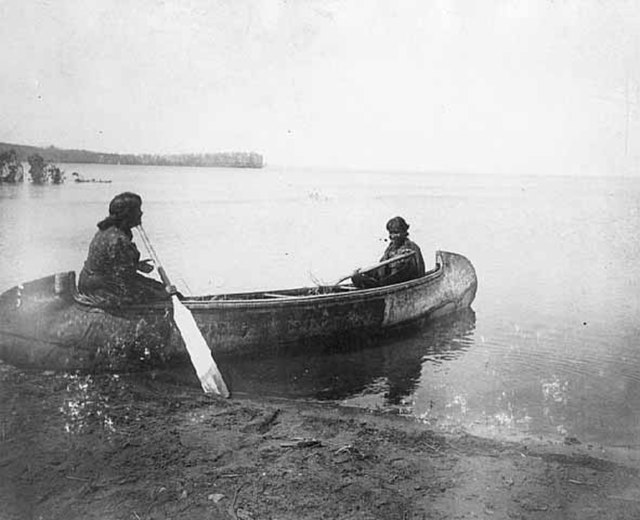The history of the U.S. state of Minnesota is shaped by its original Native American residents, European exploration and settlement, and the emergence of industries made possible by the state's natural resources. Early economic growth was based on fur trading, logging, milling and farming, and later through railroads and iron mining.
Fort Snelling played a pivotal role in Minnesota's history and in the development of nearby Minneapolis and Saint Paul
Some of the oldest stone tools found in Minnesota
Ojibwa women in a canoe, Leech Lake, 1909
Ruins of old Fond du Lac trading post on the Saint Louis River in 1907
The Territory of Minnesota was an organized incorporated territory of the United States that existed from March 3, 1849, until May 11, 1858, when the eastern portion of the territory was admitted to the Union as the State of Minnesota and the western portion became unorganized territory and shortly after was reorganized as part of the Dakota Territory.
The nine original counties of the Minnesota Territory extended into what became North Dakota and South Dakota (left)
Minnesota Territory Centennial stamp, issued in 1949 in recognition of Minnesota's unique Métis oxcart traders.
Image: Alexander Ramsey Brady Handy
Image: Willis Gorman








